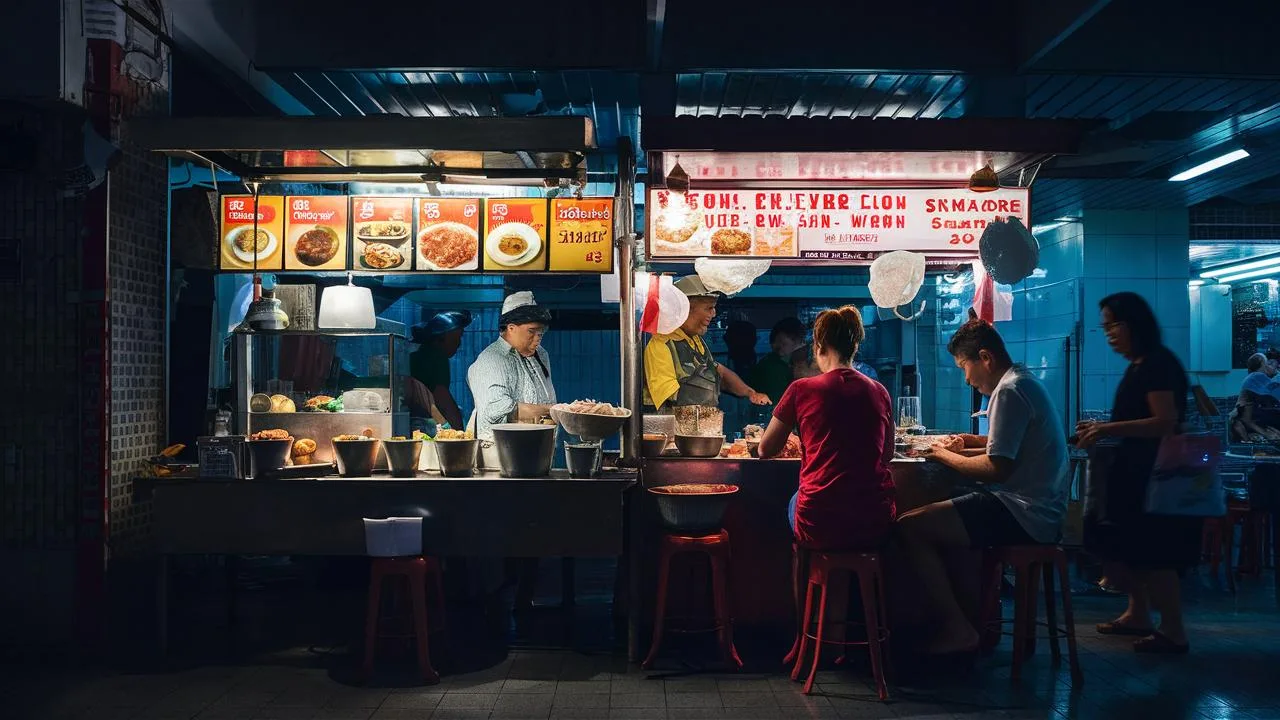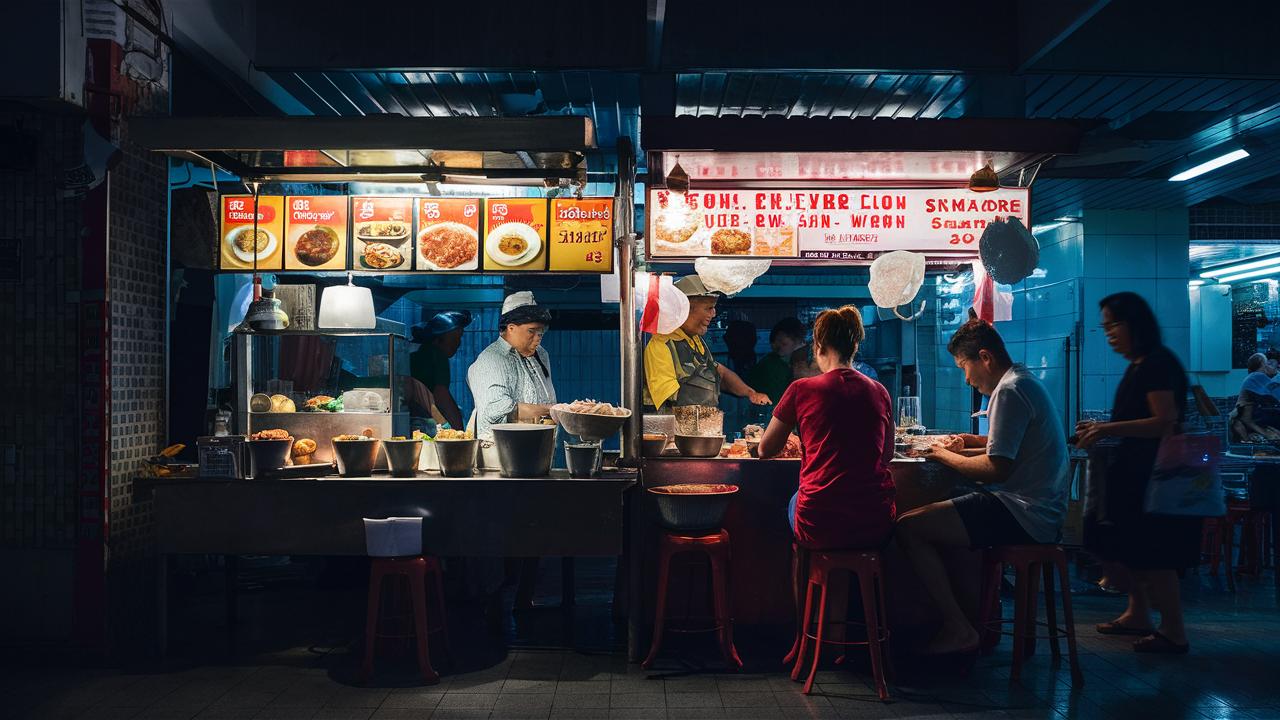What ancient importance do hawker stalls in Singapore hold?
Introduction: A Culinary Time Capsule
When you think of Singapore, images of futuristic skyscrapers and vibrant, multicultural streets probably come to mind. What many may not realize is that nestled amidst this modern metropolis are culinary treasures that have stood teh test of time—hawker stalls that have been around even before Singapore gained independence in 1965. these hawker stalls are not just food outlets; they are living history. Come along as we uncover the rich legacy of Singapore’s hawker scene, a gastronomic relic older than the Lion City itself.
The historical Roots of Singapore’s Hawker Culture
Picture this: It’s the early 19th century in Singapore, and vendors are hawking tasty, aromatic foods along bustling streets, each stall a vibrant tapestry of flavors and cultures. The term “hawker” originates from the Malay word “pengâhawâk,” which loosely means “merchant of happiness.”
The history of hawker stalls in Singapore can be traced back to immigrants coming mainly from China, india, and the Malay Archipelago. bringing with them spices, recipes, and culinary traditions, these ordinary people played an extraordinary role in building singapore’s rich food heritage.
Significant Milestones in Hawker History
- Early 1900s: Hawkers operated informally, frequently enough selling from pushcarts.
- 1950s: Efforts to organize hawkers and regulate street vendors began.
- 1960s – Early 1970s: The Singapore government introduced hawker centers to improve hygiene and free up street spaces.
- 2010s: Hawker culture recognized as key to singapore’s national identity,making its bid for UNESCO’s intangible cultural heritage list in 2019.
A Culinary Melting Pot: The Heart of Southeast Asian flavor
If Singapore is a national experiment in multiculturalism, hawker stalls are its taste buds. Offering an astonishing array of dishes from Hainanese chicken rice to Indian rojak and Malay satay, these stalls form a mosaic of cultures and cuisines.
Interestingly, each hawker dish not only tells you about its flavors but also stories of cross-cultural adaptations. Imagine a Chinese noodle dish infused with Malay spices or Indian curry that marries Chinese ingredients. That’s the delightful confluence of tastes that hawker stalls provide.
The Guardians of Tradition: Iconic Hawker Dishes and Stalls
The allure of hawker stalls lies in their ability to offer high-quality dishes without breaking the bank. Here are some iconic dishes you can’t miss:
- Hainanese Chicken Rice: Poached chicken, rice cooked in chicken stock, superhero-worthy chili sauce.
- Char Kway Teow: Stir-fried rice cake strips with soy sauce, chili, belachan, prawns, and Chinese sausage.
- Laksa: A spicy noodle soup with ingredients like coconut milk, prawns, fish cakes, and cockles.
- Nasi Lemak: Fragrant rice dish cooked in coconut milk, served with spicy sambal, eggs, anchovies, and shrimp.
Some of the venerable hawker stalls that have stood the sands of time include:
- Hill Street Tai Hwa Pork Noodle: A stall that has garnered a Michelin star for its unforgettable bak chor mee.
- Liao Fan Hong Kong Soya Sauce Chicken Rice & Noodle: Another michelin-starred joint celebrated for its divine soy sauce chicken.
The UNESCO Heritage Status Quest
In a prideful testament to this rich cultural tapestry, Singapore’s hawker culture was successfully added to the UNESCO Intangible Cultural Heritage list in December 2020. This monumental inclusion wasn’t just about those lip-smacking dishes; it honored the community spirit and identity interwoven in the fabric of hawker centers.
The push for UNESCO recognition also positions Singapore’s hawkers on the world stage, allowing them to preserve their craft while adapting to a rapidly modernizing economy.
Challenges and the Future of Hawker Stalls
Despite their historical legacy, hawker stalls are facing immense modern challenges.
Factors Threatening the Hawker Spirit
- Increasing operation costs due to rental fees and manpower struggles.
- The stigma of hawker work as being low-value and unglamorous,deterring the younger generation.
- Competition from modern eateries and food delivery services.
Addressing these issues calls for collective efforts from government policies, social attitudes, and maybe even an Instagram filter or two!
The Allure of Hawker Fare: Tourists and Locals Weigh In
Hawker stalls are epitomes of community dining, where you walk in a stranger and leave with a happy belly and a few new friends. They provide an egalitarian dining experience where Singapore’s rich family sits next to a backpacking tourist munching on char siu bao without a care in the world.
Tourists flock to singapore as much for its hawker treasures as for its Merlion statues and Sentosa beaches, proving that the true heart of Singapore squeezes into those humble stalls, lilting with spice and simmering with stories.
Conclusion: A Feast for the Senses and the Soul
Singapore’s hawker culture is more than just food—it’s about humanity, heritage, and heart. A distinctive confluence of marvelous flavors, shared stories, and vibrant community spirit gives these historical hawker stalls their soul. So, next time you’re in Singapore, embrace these flavors, these lives past and present. As here,at these hawker stalls older than the country itself,history will weigh your stomach down—but it will also lift your spirit high.


